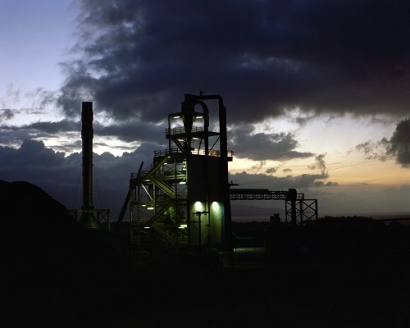
The initiative will research the use of microbes to convert carbon dioxide directly to methane using renewable electricity, a process known as microbial electromethanogenesis (ME). If developed as envisioned, ME could become a highly efficient, large-scale storage technology for excess wind and solar energy. This would, in turn, make both renewable electricity and renewable natural gas less expensive and more plentiful.
The research will build on past research by Spormann Laboratory on microbes that create methane, as well as advances in 3D-printed carbon aerogel electrode materials made by LLNL, which will be assessed for their viability in reactors. Biogas will be supplied by Delta Diablo, a Livermore, California, wastewater treatment plant. Raw biogas is mostly methane, but also contains about 30 to 40 percent carbon dioxide, which is typically vented to the atmosphere in a biogas production facility.
"This technology has the potential to cut the cost of processing biogas, while nearly doubling the amount of this easily-stored renewable energy and reducing carbon dioxide emissions," said Yuri Freedman, SoCalGas senior director of business development. "It could make a big difference for smallscale biogas producers like dairy farms and feedlots, which collectively make up the majority of California's renewable natural gas potential."
SoCalGas provided funding to this research to further develop the technologies known as power-to-gas (P2G), which stores excess renewable electricity as renewable gas rather than in conventional batteries. Power-to-gas has two distinct advantages over batteries: nearly unlimited amounts of electricity can be easily stored for very long periods of time, and it can be stored and used with existing infrastructure.
Between 3,300 and 7,800 GWh of excess solar and wind energy will be curtailed in California by 2025 due to time-of-day supply/demand mismatches, according to a recent Lawrence Berkley National Lab study. If that excess solar and wind energy were converted to methane and stored as renewable natural gas, it would provide enough renewable energy to heat 158,000 to 370,000 homes or provide renewable electricity to 80,000 to 187,000 homes.
The University of California at Davis estimates that the natural gas needs of around 2.4 million California homes could be fueled with renewable natural gas derived from the state's existing organic waste. Already, 60 percent of the fuel used in natural gas vehicles in California is renewable, and SoCalGas expects that to increase to 90 percent by 2019.
Technological advances like power-to-gas and renewable natural gas can reduce greenhouse gas emissions while providing energy resiliency and meeting consumers' fuel preferences. Across Southern California, people prefer natural gas four to one over electricity because it is more affordable and reliable, and more than 90 percent of residents use natural gas in their homes.
The research will be conducted at both LLNL and Stanford School of Engineering beginning in August, and is expected to be complete by mid-2020.

